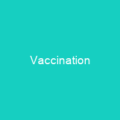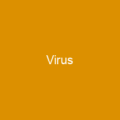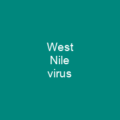Rabies: The Silent Killer
Imagine a disease so terrifying that it has haunted human history for millennia, causing fear and superstition in its wake. Rabies, the viral disease that causes encephalitis in humans and other mammals, is one such horror story. Historically known as hydrophobia, this condition strikes with symptoms ranging from fever to violent movements, ultimately leading to almost certain death once symptoms appear.
How Rabies Spreads and Its Impact
Rabies spreads through animal bites or scratches, primarily by dogs but also by bats. The virus is a silent killer, present in over 150 countries across all continents except Antarctica. In regions like Africa and Asia, the majority of rabies cases occur in children under 15 years old. The global cost of this disease is staggering, estimated at US$8.6 billion per year, encompassing lost lives, medical care, and psychological trauma.
Understanding Rabies Symptoms
The initial symptoms of rabies are often subtle: fever, headache, and nonspecific signs like slight or partial paralysis. As the disease progresses, victims experience anxiety, insomnia, confusion, agitation, and fear of water—a condition known as hydrophobia. The incubation period can range from four days to six years, making prevention crucial.
The Viral Pathogen
Rabies is caused by a virus that multiplies in the salivary glands, leading to increased saliva production and transmission through biting. This virus has five genes: nucleoprotein, phosphoprotein, matrix protein, glycoprotein, and viral RNA polymerase. It enters cells via acetylcholine receptors, replicates in muscle or nerve cells, and travels along neural pathways into the central nervous system.
Diagnosis and Prevention
Diagnosing rabies can be challenging but involves tests like the fluorescent antibody test (FAT), immunohistochemistry procedures, and RT PCR assays. Vaccination is key to prevention; modern vaccines use cell culture or purified chicken embryo cells instead of dried rabbit nerve tissue.
Treatment and Post-Exposure Prophylaxis
Post-exposure prophylaxis involves one dose of human rabies immunoglobulin (HRIG) and four doses of rabies vaccine over a 14-day period. This treatment is crucial, as the disease is almost always fatal once symptoms appear. However, thorough washing with soap and water can reduce viral particles.
Global Efforts to Eradicate Rabies
The number of human deaths from rabies has dropped significantly due to widespread vaccination of domestic dogs and cats and development of human vaccines and immunoglobulin treatments. In regions like India, where stray dogs are a significant risk factor, effective control is hindered by mass hysteria.
Historical Context
Rabies has been known since around 2000 BC, with the first written record in the Mesopotamian Codex of Eshnunna. Ancient Greece attributed rabies to Lyssa, a spirit of mad rage. Ineffective folk remedies were used, including poultices and preparations made from animal skulls. The disease was considered a scourge in the 19th century, leading to superstitions such as branding dogs with ‘St Hubert’s Key.’
Conclusion
Rabies remains one of humanity’s most feared diseases, but through vaccination efforts and awareness, we can continue to reduce its impact. As Louis Pasteur once said, “Science is made up of mistakes, but they are mistakes which progress toward the truth.” By staying informed and taking preventive measures, we can fight this silent killer.

You want to know more about Rabies?
This page is based on the article Rabies published in Wikipedia (retrieved on November 29, 2024) and was automatically summarized using artificial intelligence.







